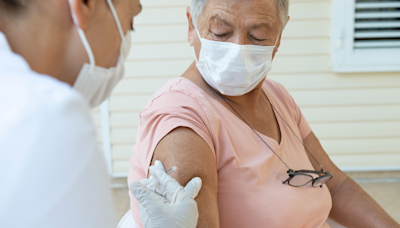Search results
People also ask
Can a child have a fever with no other symptoms?
What does it mean if your child has a fever?
How do you know if your child has a fever?
If a child has a fever and is still playing, drinking fluid, eating, and running around, there is no need to treat it with medication. However, it’s normal for children to feel really uncomfortable when they have a fever. Typical symptoms include feeling achy, having chills, or a headache.
- Julia Morrill
- On this page
- Symptoms
- When to see a doctor
- From Mayo Clinic to your inbox
- Causes
- Complications
- Prevention
- News from Mayo Clinic
- More Information
•Overview
•Symptoms
•When to see a doctor
•Causes
•Complications
•Prevention
Body temperatures vary slightly from person to person and at different times of day. The average temperature has traditionally been defined as 98.6 F (37 C). A temperature taken using a mouth thermometer (oral temperature) that's 100 F (37.8 C) or higher is generally considered to be a fever.
Depending on what's causing a fever, other fever signs and symptoms may include:
•Sweating
•Chills and shivering
•Headache
•Muscle aches
Infants and toddlers
A fever is a particular cause for concern in infants and toddlers. Call your baby's health care provider if your child is:
Children
There's probably no cause for alarm if your child has a fever but is responsive. This means your child makes eye contact with you and responds to your facial expressions and to your voice. Your child may also be drinking fluids and playing. Call your child's health care provider if your child:
Adults
Call your health care provider if your temperature is 103 F (39.4 C) or higher. Seek immediate medical attention if any of these signs or symptoms accompanies a fever:
Sign up for free and stay up to date on research advancements, health tips, current health topics, and expertise on managing health. Click here for an email preview.
To provide you with the most relevant and helpful information, and understand which information is beneficial, we may combine your email and website usage information with other information we have about you. If you are a Mayo Clinic patient, this could include protected health information. If we combine this information with your protected health information, we will treat all of that information as protected health information and will only use or disclose that information as set forth in our notice of privacy practices. You may opt-out of email communications at any time by clicking on the unsubscribe link in the e-mail.
Typical body temperature is a balance of heat production and heat loss. An area in the brain called the hypothalamus (hi-poe-THAL-uh-muhs) — also known as your body's "thermostat" — monitors this balance. Even when you're healthy, your body temperature varies slightly throughout the day. It can be lower in the morning and higher in the late afternoon and evening.
When your immune system responds to disease, the hypothalamus can set your body temperature higher. This prompts complex processes that produce more heat and restrict heat loss. The shivering you might experience is one way the body produces heat. When you wrap up in a blanket because you feel chilled, you are helping your body retain heat.
Fevers below 104 F (40 C) associated with common viral infections, such as the flu, may help the immune system fight disease and are generally not harmful.
Fever or elevated body temperature might be caused by:
•A viral infection
•A bacterial infection
Children between the ages of 6 months and 5 years are at increased risk of a seizure that occurs during a fever (febrile seizure). About a third of the children who have one febrile seizure will have another one, most commonly within the next 12 months.
A febrile seizure may involve loss of consciousness, shaking of limbs on both sides of the body, eyes rolling back or body stiffness. Although alarming for parents, the vast majority of febrile seizures cause no lasting effects.
If a seizure occurs:
•Lay your child on the side or stomach on the floor or ground
•Remove any sharp objects that are near your child
•Loosen tight clothing
You may be able to prevent fevers by reducing exposure to infectious diseases. Here are some tips that can help:
•Get vaccinated as recommended for infectious diseases, such as influenza and COVID-19.
•Follow public health guidelines for wearing masks and social distancing.
•Wash your hands often and teach your children to do the same, especially before eating, after using the toilet, after spending time in a crowd or around someone who's sick, after petting animals, and during travel on public transportation.
•Show your children how to wash their hands thoroughly, covering both the front and back of each hand with soap and rinsing completely under running water.
•Carry hand sanitizer with you for times when you don't have access to soap and water.
•Mayo Clinic Minute: What to do and not do when your child has a viral fever
•Mayo Clinic Minute: Acetaminophen aids with fever, pain
•Fever treatment: Quick guide to treating a fever
•Thermometers: Understand the options
Sep 14, 2022 · When your child’s temperature rises above 100.4 degrees Fahreinheit, it’s a fever, which means their immune system is working the way it should. (There are a few exceptions—so keep reading…) While fever is caused by an infection, sometimes your child may have a fever with no other symptoms at all.
What are the symptoms that my child may have a fever? Children with fevers may become more uncomfortable as the temperature rises. In addition to a body temperature greater than 100.4°F (38°C), symptoms may include: Your child may not be as active or talkative as usual. He or she may seem fussier, less hungry, and thirstier.
- The higher the temperature, the more serious the illness. Truth: A high temperature may indicate a serious illness in teens and adults, but not always in children 12 and under.
- For true accuracy, only a rectal temperature will do. Truth: Taking a rectal temperature isn’t always necessary. Rectal temperatures are most accurate but don’t fret about getting one in older children, advises Dr. Klein.
- Ear and forehead thermometers are as accurate as digital thermometers. Truth: Tympanic (ear) and temporal (forehead) thermometers aren’t as reliable as digital multiuse thermometers.
- The only normal temperature is 98.6°F. Truth: 100°F may not be a fever. The well-known 98.6°, is a normal temperature taken by mouth. An underarm temperature may be about one degree lower.
Apr 30, 2024 · Fever in Babies and Children: When To Worry. Behavior and age are important clues. Your knee-jerk reaction when your child develops a fever may be to immediately start ringing the alarms. Fevers can be scary for parents, especially first-timers.
Etiology |. Evaluation |. Testing for Acute Fever |. Testing for Chronic Fever |. Treatment |. Key Points. Normal body temperature varies from person to person and throughout the day. Normal body temperature is highest in children who are preschool aged.


